Understanding Customer Preferences of Delivery Services for Online Grocery Retailing in South Korea
Abstract
1. Introduction
2. Literature Reviews
2.1. Delivery Services for Online Shopping
2.2. Conjoint Analysis
3. Research Methodology
3.1. Data
3.2. Conjoint Analysis Procedure
- Step 1. Formulate the problem
- Step 2. Selection of the preferred model
- Step 3. Data collection method & Stimulus set construction
- Step 4. Stimulus presentation
- Step 5. Measurement scale for the dependent variable
- Step 6. Estimation method
3.3. Analysis Methods
4. Results
4.1. The Preference Ratings of the Customers for the Delivery Service Types
4.2. The Relative Importance Weights and Utilities of the Delivery Attributes
4.3. Conjoint Results for Each Subgroups According to Customer Characteristics
4.3.1. Conjoint Analysis Results for Groups Divided by Gender
4.3.2. Conjoint Analysis Results for Groups Divided by Age
4.3.3. Conjoint Analysis Results for Groups Divided by Occupation
4.4. Overall Results and Discussion
5. Managerial Implications
5.1. Theoretical Contribution
5.2. Practical Implication
6. Conclusions
Funding
Informed Consent Statement
Data Availability Statement
Conflicts of Interest
Appendix A

References
- Aull, B.; Begley, S.; Chandra, V.; Mathur, V. Making Online Grocery a Winning Proposition. 2021. Available online: https://www.mckinsey.com/industries/consumer-packaged-goods/our-insights/making-online-grocery-a-winning-proposition (accessed on 20 September 2022).
- Statistics Korea. Online Shopping in May. Report, South Korea, May 2022. Available online: https://kostat.go.kr/portal/eng/pressReleases/1/index.board?bmode=read&aSeq=419101 (accessed on 20 September 2022).
- Joerss, M.; Neuhaus, F.; Schröder, J. How customer demands are reshaping last-mile delivery. McKinsey Q. 2016, 17, 1–5. [Google Scholar]
- Kim, D.S. Dawn Delivery Takes Retail Industry by Storm. The Korea Herald, 13 July 2019. Available online: https://www.theinvestor.co.kr/common/newsprint.php?ud=20190113000188&dt=2 (accessed on 20 September 2022).
- Uatay, G.; Cho, D.S.; Lee, H.Y. Gaging Customer Response to Dawn Delivery Service Using Social Big Data. Culin. Sci. Hosp. Res. 2020, 26, 1–9. [Google Scholar]
- Scriven, R. Early Morning Delivery: A Roaring eCommerce Trend In South Korea, Robotics & Warehouse Automation. 2021. Available online: https://www.interactanalysis.com/early-morning-delivery-a-roaring-ecommerce-trend-in-south-korea/ (accessed on 20 September 2022).
- Shin, H.C. E-mart is Also Entering...Early Morning Delivery. Dong-A Ilbo, 26 June 2019. Available online: https://www.donga.com/news/View?gid=96184723&date=20190626&prod=ECONOMY (accessed on 20 September 2022).
- PackNet. Market Kurly’s All Paper Challenge. 7 October 2019. Available online: https://www.packnet.co.kr/news/n_read.html?kind=menu_code&keys=5&newsid=9790&listpage=n_list.html (accessed on 20 September 2022).
- Korea Conformity Laboratories. The Study of Field Application for Reducing Distribution Packaging Materials; Report for Ministry of Environment; Korea Conformity Laboratories: Seoul, Republic of Korea, 2019. [Google Scholar]
- Peiling, Z.; Tingting, L. Understanding Consumer Preferences for Logistics Services within Online Retailing of Fresh Products: A Research Conducted on Swedish Consumers. Master’s Thesis, Jönköping University, Jönköping, Sweden, 2018. [Google Scholar]
- Talalyan, L.; Obasi, V.C. Understanding the Preferences of Norwegian Consumers for Logistics Services within Online Retailing of Apparel Products. Master’s Thesis, Molde University College, Molde, Norway, 2021. [Google Scholar]
- Park, Y.-J. Factors affecting customer preferences in e-commerce delivery packaging types for fresh food. Korea Manag. Rev. 2021, 50, 1011–1036. [Google Scholar] [CrossRef]
- Liu, X.; He, M.; Gao, F.; Xie, P. An empirical study of online shopping customer satisfaction in China: A holistic perspective. Int. J. Retail. Distrib. Manag. 2008, 36, 919–940. [Google Scholar] [CrossRef]
- Guo, X.; Ling, K.C.; Liu, M. Evaluating factors influencing consumer satisfaction towards online shopping in China. Asian Soc. Sci. 2012, 8, 40–50. [Google Scholar] [CrossRef]
- Lin, C.C.; Wu, H.Y.; Chang, Y.F. The critical factors impact on online customer satisfaction. Procedia Comput. Sci. 2011, 3, 276–281. [Google Scholar] [CrossRef]
- Kim, H.R. Developing an index of online customer satisfaction. J. Financ. Serv. Mark. 2005, 10, 49–64. [Google Scholar] [CrossRef]
- Dharmesti, M.D.D.; Nugroho, S.S. The antecedents of online customer satisfaction and customer loyalty. J. Bus. Retail. Manag. Res. 2013, 7, 1–12. [Google Scholar]
- Hsin, H.C.; Hsin, W.W. The moderating effect of customer perceived value on online shopping behavior. Online Inf. Rev. 2011, 35, 333–359. [Google Scholar] [CrossRef]
- Vakulenko, Y.; Shams, P.; Hellström, D.; Hjort, K. Online retail experience and customer satisfaction: The mediating role of last mile delivery. Int. Rev. Retail. Distrib. Consum. Res. 2019, 29, 306–320. [Google Scholar] [CrossRef]
- Coşar, C.; Varga, A. Try Not to Be Late!—The importance of delivery service in online shopping. Organ. Mark. Emerg. Econ. 2017, 8, 177–192. [Google Scholar] [CrossRef]
- Singh, R.; Söderlund, M. Extending the experience construct: An examination of online grocery shopping. Eur. J. Mark. 2020, 54, 2419–2446. [Google Scholar] [CrossRef]
- Restuputri, D.P.; Fridawati, A.; Masudin, I. Customer perception on last-mile delivery services using Kansei engineering and conjoint analysis: A case study of Indonesian logistics providers. Logistics 2022, 6, 29. [Google Scholar] [CrossRef]
- Jin, M.J. Market Kurly Sales Topped 156 Billion Won Last Year. Korea Joongang Daily, 17 April 2019. Available online: https://koreajoongangdaily.joins.com/2019/04/17/industry/Market-Kurly-sales-topped-156-billion-won-last-year/3061990.html (accessed on 20 September 2022).
- Kim, N.; Hwang, K.; Yang, S.-B. The Influence of Perceived Value of Fresh Food Early-Morning Delivery Services on Continuous Use Intention: Focusing on the Value-Based Adoption Model. J. Internet Electron. Commer. Res. 2021, 21, 1–26. [Google Scholar] [CrossRef]
- Lee, S.-O.; Kim, J.-Y.; Lee, S.-M. Effects of the Dietary Behavior-Related Consumer Competency on the Purchase Satisfaction of Fresh Food via Early-Morning Delivery Service. J. Korean Soc. Food Sci. Nutr. 2021, 50, 612–624. [Google Scholar] [CrossRef]
- Cohen, J. The Importance of Packaging in Logistics. Royal Supply Chain. 2019. Available online: https://www.shiproyal.com/rsc-the-importance-of-packaging-in-logistics/ (accessed on 20 September 2022).
- Jang, J.-W.; Kim, S.-I. Packaging Design to Maintain Food Freshness of E-Commerce -Focused on Domestic and International Cases. J. Korea Converg. Soc. 2019, 10, 115–120. [Google Scholar]
- Wikipedia. 2022. Available online: https://en.wikipedia.org/wiki/Conjoint_analysis (accessed on 20 September 2022).
- Danaher, P.J. Using conjoint analysis to determine the relative importance of service attributes measured in customer satisfaction surveys. J. Retail. 1997, 73, 235–260. [Google Scholar] [CrossRef]
- Alriksson, S.; Öberg, T. Conjoint analysis for environmental evaluation. Environ. Sci. Pollut. Res. 2008, 15, 244–257. [Google Scholar] [CrossRef]
- Green, P.E.; Srinivasan, V. Conjoint Analysis in Consumer Research: Issues and Outlook. J. Consum. Res. 1978, 5, 103–123. [Google Scholar] [CrossRef]
- Ostrom, A.; Lacobucci, D. Consumer trade-offs and the evaluation of services. J. Mark. 1995, 59, 17–28. [Google Scholar] [CrossRef]
- Schaupp, L.C.; Bélanger, F. A conjoint analysis of online consumer satisfaction. J. Electron. Commer. Res. 2005, 6, 95–111. [Google Scholar]
- Quester, P.G.; Smart, J. The influence of consumption situation and product involvement over consumers’ use of product attribute. J. Consum. Mark. 1998, 15, 220–238. [Google Scholar] [CrossRef]
- Green, P.E.; Srinivasan, V. Conjoint analysis in marketing: New developments with implications for research and practice. J. Mark. 1990, 54, 3–19. [Google Scholar] [CrossRef]
- Malhotra, N.; Nunan, D.; Birks, D. Marketing Research: An Applied Approach; Pearson: London, UK, 2017. [Google Scholar]
- Steiner, M.; Meißner, M. A user’s guide to the galaxy of conjoint analysis and compositional preference measurement. Mark. ZFP–J. Res. Manag. 2018, 40, 3–25. [Google Scholar] [CrossRef]
- Johnston, J. Econometric Methods, 2nd ed.; McGraw-Hill Book Co.: New York, NY, USA, 1972. [Google Scholar]
- Korea Women’s Development Institute. Internet Shopping (Gender/Age), South Korea. 2022. Available online: https://gsis.kwdi.re.kr/statHtml/statHtml.do?orgId=338&tblId=DT_1IB0609N. (accessed on 24 February 2023).
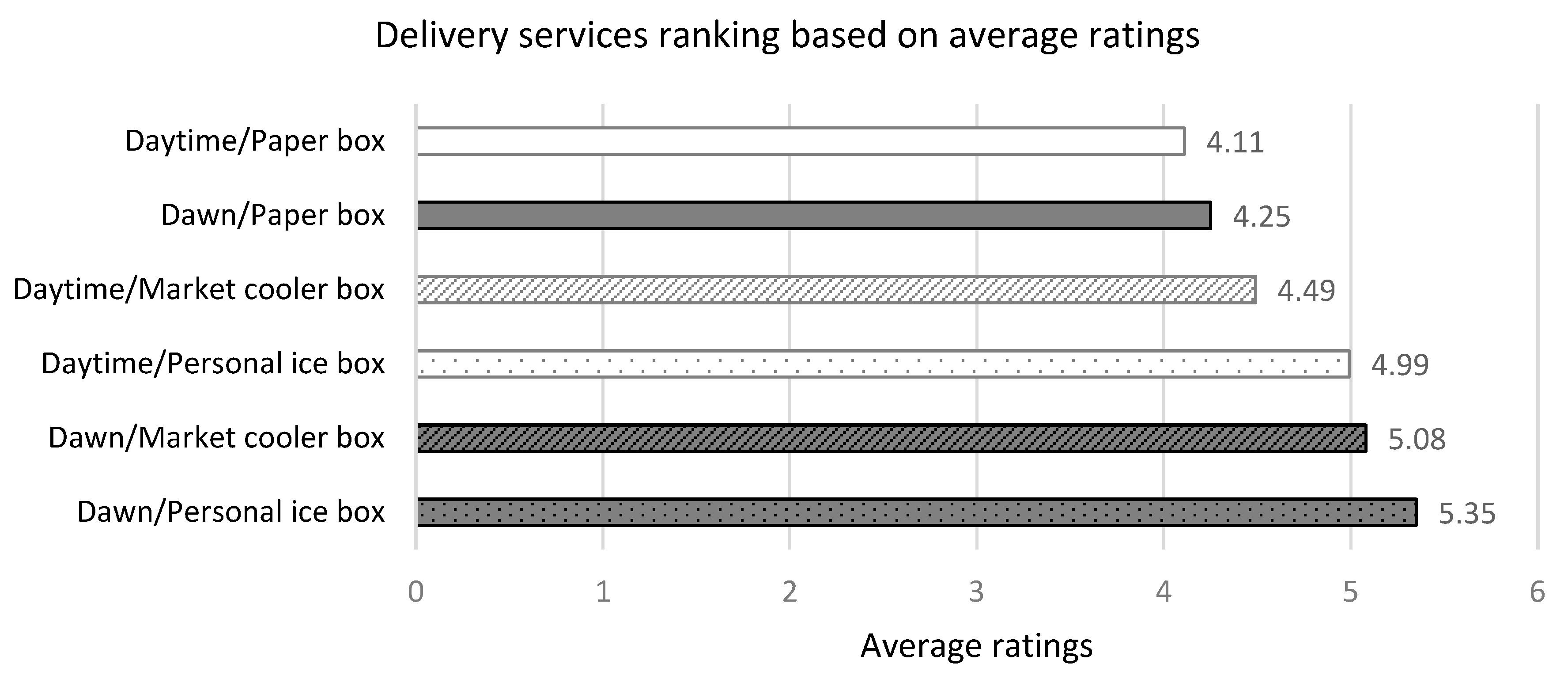
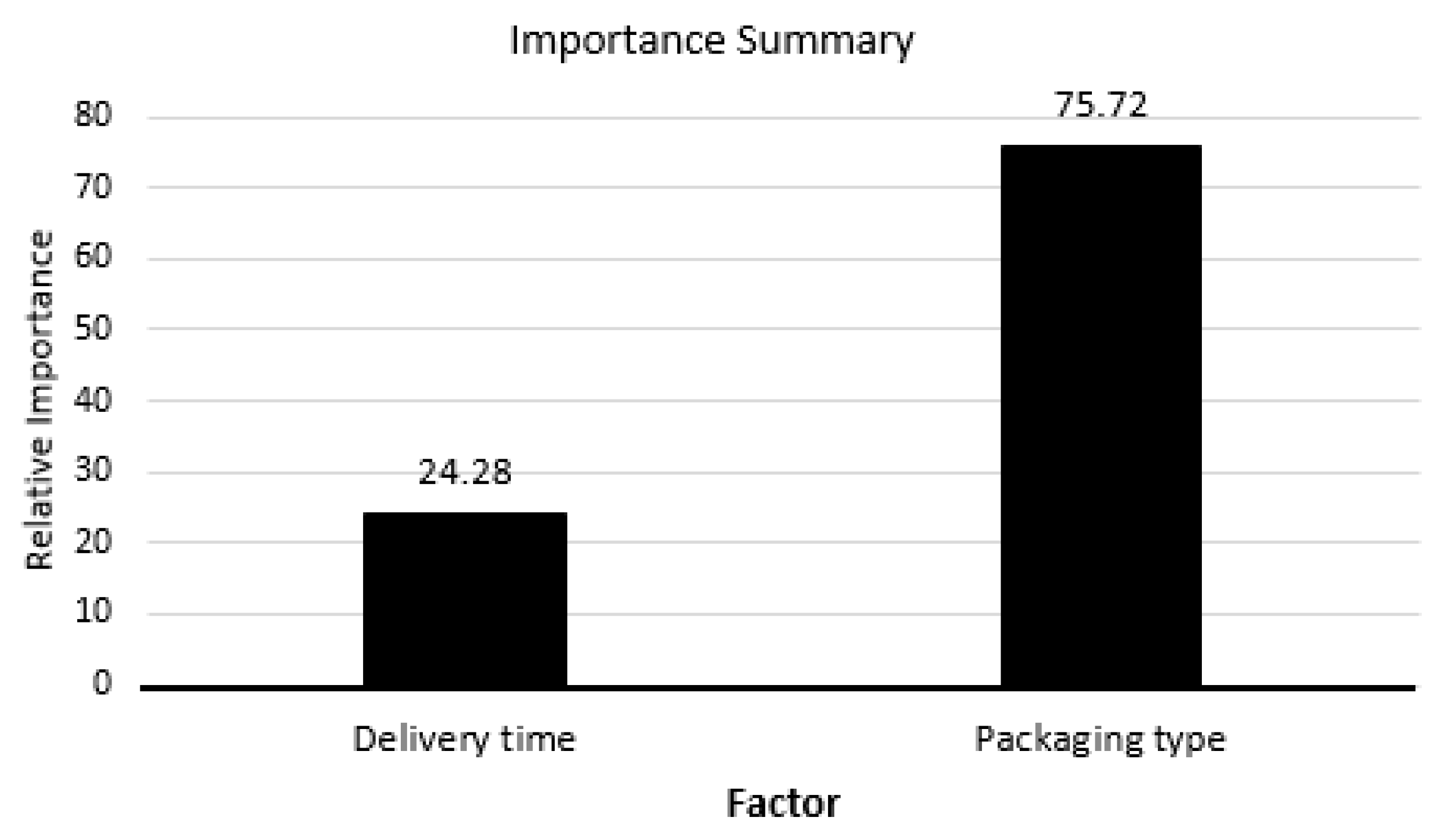
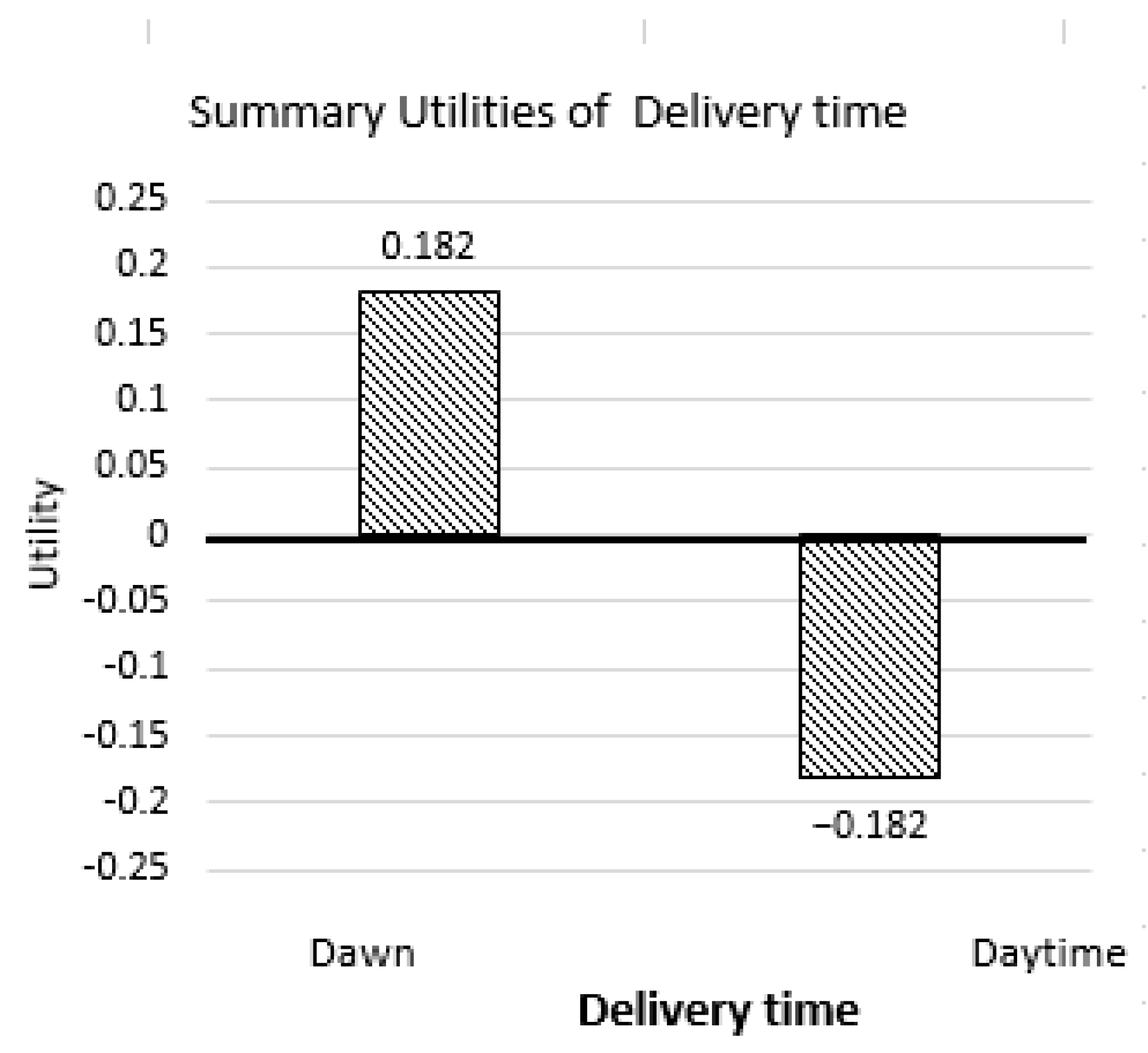
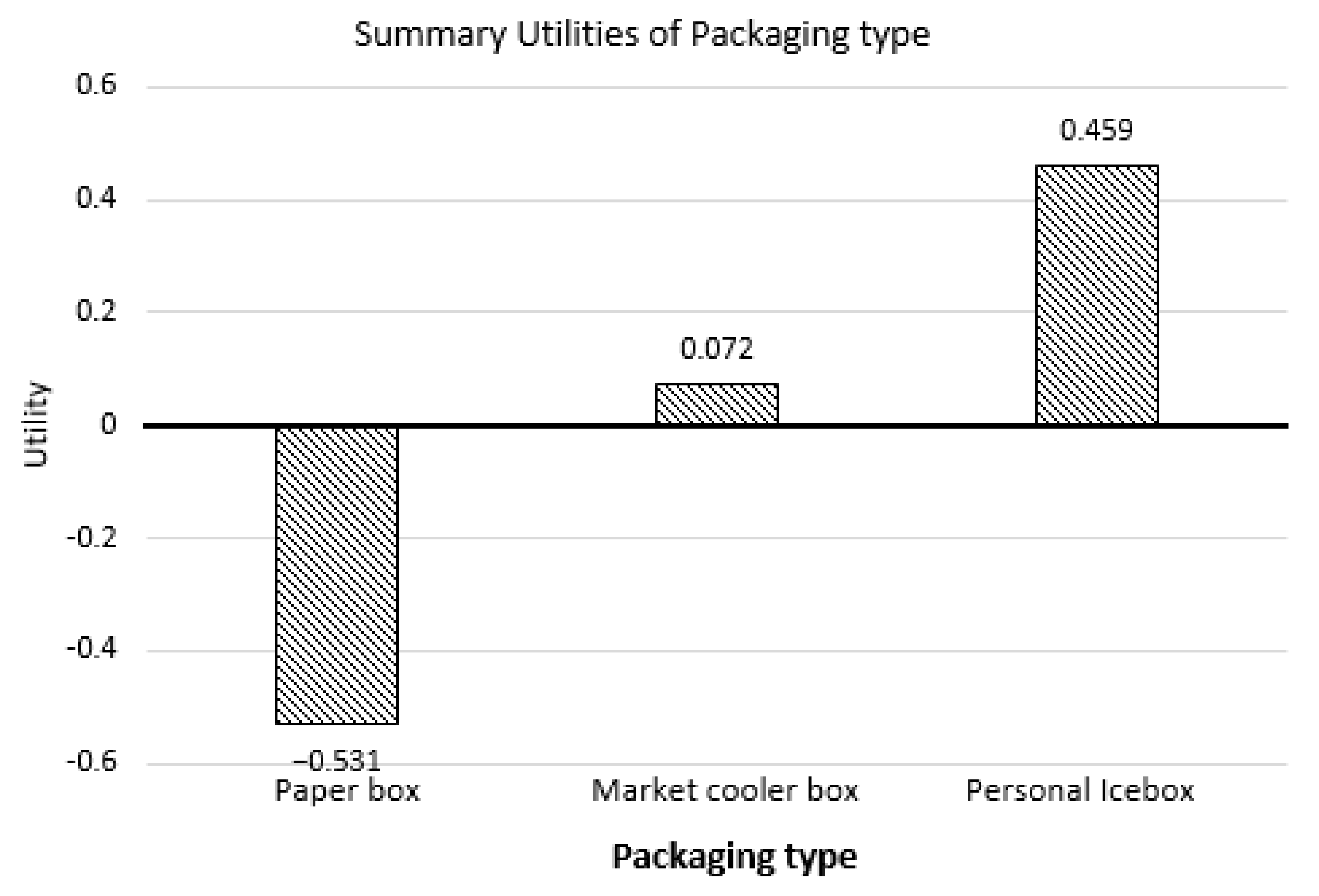
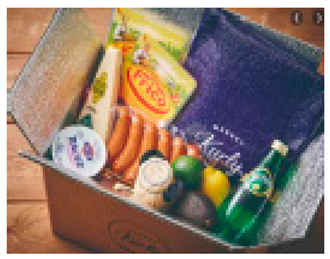 | 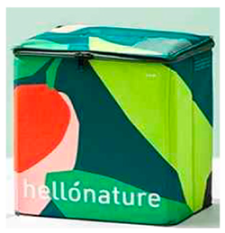 | 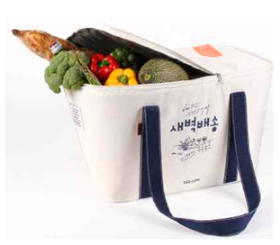 |  | |
| Name | Eco Box | The Green Box | I’ll Be Bag | LiviriFresh |
| Packaging type | Paper box | Market cooler bag | Market cooler bag | Market cooler bag |
| Company | Market Kurly | Hello Nature | Emart Mall | Liviri |
| Material | Paper (recycled pulp) | Plastic (PE) | Plastic (PE, PET, EVA) | Plastic (PP) |
| Reusability | Non-reusable Recyclable | Recyclable 20 times or more | Recyclable 20 times or more | Recyclable 75 times or less |
| Product Temperature | Coupang | Market Kurly | Emart Mall | Amazon |
|---|---|---|---|---|
| Room temp. products | Paper box | Paper box | Plastic box (in absence) Paper bag | Reusable bag, Paper box |
| Refrigerated products | Cold cardboard box | Waterproof Paper box | ||
| Frozen products | EPS box | EPS box | Fiber-filled insulated bag |
| Demographic Categories | Frequency | Percentage | Demographic Categories | Frequency | Percentage | ||
|---|---|---|---|---|---|---|---|
| (#) | (%) | (#) | (%) | ||||
| Gender | Male | 113 | 51.8 | Occupation | Student | 7 | 3.2 |
| Female | 105 | 48.2 | Housewife | 32 | 14.7 | ||
| Total | 218 | 100 | Admin./Office worker | 110 | 50.5 | ||
| Age | 20~29 | 32 | 14.7 | Professional | 31 | 14.2 | |
| 30~39 | 92 | 42.2 | Sales/Service | 20 | 9.2 | ||
| 40~49 | 76 | 34.9 | Tech./Production | 9 | 4.1 | ||
| 50~59 | 18 | 8.3 | Other | 9 | 4.1 | ||
| Total | 218 | 100 | Total | 218 | 100 | ||
| Educational level | High school | 26 | 11.9 | Monthly household incomes (1000 won) | below 3000 | 30 | 13.8 |
| College | 168 | 77.1 | 3000 to less than 5000 | 67 | 30.7 | ||
| Graduate or more | 24 | 11 | |||||
| 5000 to less than 7000 | 67 | 30.7 | |||||
| Total | 218 | 100 | 7000 to less than | 34 | 15.6 | ||
| Children | Yes | 113 | 51.8 | 9000 or more | 20 | 9.2 | |
| No | 105 | 48.2 | Total | 218 | 100 | ||
| Total | 218 | 100 | |||||
| Variable | Frequency (#) | Percentage (%) | |
|---|---|---|---|
| Average # of online mart usage events (In four weeks) | 2~4 | 143 | 65.6 |
| 5~7 | 54 | 24.8 | |
| 8 or more | 21 | 9.6 | |
| Total | 218 | 100 | |
| # of e-grocery stores used (in the last six months) | 1 | 13 | 6.0 |
| 2 | 92 | 42.2 | |
| 3 | 65 | 29.8 | |
| 4 or more | 48 | 22.0 | |
| Total | 218 | 100 | |
| Step | This Study |
|---|---|
| 1. Formulate the problem | Identify attributes and levels |
| 2. Select a model of preference | Part-worth function model |
| 3. Data collection method & Stimulus set construction | Full profile |
| 4. Stimulus presentation | Written instructions |
| 5. Measurement scale for the dependent variable | Metric (rating scales) |
| 6. Estimation method | Ordinary least square |
| Attributes | Attribute Levels |
|---|---|
| Delivery time | Dawn delivery Daytime delivery |
| Distribution packaging | Paper box Market cooler bag Personal ice box |
| Card # | Time | Packaging | Preferences | ||||||||
|---|---|---|---|---|---|---|---|---|---|---|---|
| Very Unlikely | 1 | 2 | 3 | 4 | 5 | 6 | 7 | Very Likely | |||
| 1 | Daytime | Paper box | ○ | ○ | ○ | ○ | ○ | ○ | ○ | ||
| 2 | Dawn | Personal icebox | ○ | ○ | ○ | ○ | ○ | ○ | ○ | ||
| 3 | Dawn | Market Cooler Bag | ○ | ○ | ○ | ○ | ○ | ○ | ○ | ||
| 4 | Daytime | Personal icebox | ○ | ○ | ○ | ○ | ○ | ○ | ○ | ||
| 5 | Daytime | Market Cooler Bag | ○ | ○ | ○ | ○ | ○ | ○ | ○ | ||
| 6 | Dawn | Paper box | ○ | ○ | ○ | ○ | ○ | ○ | ○ | ||
| Rank | Delivery Type | Average Ratings | Std. Dev. |
|---|---|---|---|
| 1 | Dawn/Personal ice box | 5.35 | 2.170 |
| 2 | Dawn/Market cooler bag | 5.08 | 2.402 |
| 3 | Daytime/Personal ice box | 4.99 | 2.375 |
| 4 | Daytime/Market cooler bag | 4.49 | 2.427 |
| 5 | Dawn/Paper box | 4.25 | 2.349 |
| 6 | Daytime/Paper box | 4.11 | 2.441 |
| Total | 4.71 | 2.402 | |
| Sum of Squares | df | Mean Square | F | Sig. | |
|---|---|---|---|---|---|
| Between Groups | 271.492 | 5 | 54.298 | 9.729 | 0.000 |
| Within Groups | 7266.422 | 1302 | 5.581 | ||
| Total | 7537.914 | 1307 |
| Scheffe | ||||
|---|---|---|---|---|
| Delivery Type | Sub Groups (Sig. Level = 0.0) | |||
| 1 | 2 | 3 | 4 | |
| Day-Personal box | 4.11 | |||
| Dawn-Paper box | 4.25 | 4.25 | ||
| Day-Market cooler bag | 4.49 | 4.49 | 4.49 | |
| Day-Paper box | 4.99 | 4.99 | 4.99 | |
| Dawn-Market cooler bag | 5.08 | 5.08 | ||
| Dawn-Personal ice box | 5.35 | |||
| Sig. Level | 0.726 | 0.059 | 0.242 | 0.767 |
| Attribute | Level | Utility Estimation | Relative Importance (%) | Goodness of Fit |
|---|---|---|---|---|
| Delivery time | Dawn | 0.182 | 24.280 | Pearson’s R (0.98 ***) |
| Daytime | −0.182 | |||
| Packaging type | Paper box | −0.531 | 75.720 | Kendal’s Tau (0.867 **) |
| Market cooler bag | 0.072 | |||
| Personal icebox | 0.459 |
| Attribute | Level | Male (113) | Female (105) | ||
|---|---|---|---|---|---|
| Utility | Importance | Utility | Importance | ||
| Delivery time | Dawn | 0.232 | 23.643124 | 0.129 | 24.966 |
| Daytime | −0.232 | −0.129 | |||
| Packaging type | Paper box | −0.320 | 76.356876 | −0.759 | 75.034 |
| Market cooler bag | 0.052 | 0.094 | |||
| Personal icebox | 0.268 | 0.665 | |||
| Total | 100 | 100 | |||
| Attribute | Level | 20s (32) | 30s (92) | 40s (76) | 50s (18) | ||||
|---|---|---|---|---|---|---|---|---|---|
| Utility | Importance | Utility | Importance | Utility | Importance | Utility | Importance | ||
| Delivery time | Dawn | 0.271 | 27.137 | 0.217 | 26.750 | 0.175 | 21.894 | −0.130 | 16.654 |
| Daytime | −0.271 | −0.217 | −0.175 | 0.130 | |||||
| Packaging type | Paper box | −0.490 | 72.863 | −0.658 | 73.250 | −0.430 | 78.106 | −0.389 | 83.346 |
| Market cooler bag | 0.151 | 0.266 | −0.147 | −0.139 | |||||
| Personal icebox | 0.339 | 0.391 | 0.577 | 0.528 | |||||
| Total | 100 | 100 | 100 | 100 | |||||
| Attribute | Level | Housewife | Worker | ||
|---|---|---|---|---|---|
| Utility | Importance | Utility | Importance | ||
| Delivery time | Dawn | 0.099 | 21.660 | 0.202 | 25.062 |
| Daytime | −0.099 | −0.202 | |||
| Packaging type | Paper box | −0.922 | 78.340 | −0.437 | 74.938 |
| Market cooler bag | 0.188 | 0.027 | |||
| Personal icebox | 0.734 | 0.410 | |||
| Total | 100 | 100 | |||
| Research Question 1 | Which delivery service types do customers prefer for their groceries shopping among the six delivery types? |
| Analysis Method | Ranking the average customer preference ratings & ANOVA |
| Result | Dawn delivery using the personal ice box is the preferred delivery service type |
| Research Question 2 | What factors do customers consider to be more important between delivery time options and packaging type options? |
| Analysis Method | Conjoint Analysis |
| Result | Customers consider packaging type more important than delivery time The utility of packaging type attribute levels Personal icebox > Market cooler bag > Paper box The utility of delivery time attribute levels Dawn delivery > Daytime delivery |
| Research Question 3 | Are there any differences in preferred delivery types depending on the type of consumer? |
| Analysis Method | Conjoint Analysis for each subgroups having different characteristics |
| Result | The male and the worker groups express a much stronger preference for dawn delivery than the female and the housewife groups respectively. The female and the housewife groups prefer the personal icebox and dislike the paper box much more than the male and worker groups respectively. The younger generation values the delivery time more than over 50s. The younger generation have a stronger preference for dawn delivery than over 50s. The worker group considers delivery time to be more important than the housewife group. |
Disclaimer/Publisher’s Note: The statements, opinions and data contained in all publications are solely those of the individual author(s) and contributor(s) and not of MDPI and/or the editor(s). MDPI and/or the editor(s) disclaim responsibility for any injury to people or property resulting from any ideas, methods, instructions or products referred to in the content. |
© 2023 by the author. Licensee MDPI, Basel, Switzerland. This article is an open access article distributed under the terms and conditions of the Creative Commons Attribution (CC BY) license (https://creativecommons.org/licenses/by/4.0/).
Share and Cite
Park, Y.-J. Understanding Customer Preferences of Delivery Services for Online Grocery Retailing in South Korea. Sustainability 2023, 15, 4650. https://doi.org/10.3390/su15054650
Park Y-J. Understanding Customer Preferences of Delivery Services for Online Grocery Retailing in South Korea. Sustainability. 2023; 15(5):4650. https://doi.org/10.3390/su15054650
Chicago/Turabian StylePark, Yoon-Joo. 2023. "Understanding Customer Preferences of Delivery Services for Online Grocery Retailing in South Korea" Sustainability 15, no. 5: 4650. https://doi.org/10.3390/su15054650
APA StylePark, Y.-J. (2023). Understanding Customer Preferences of Delivery Services for Online Grocery Retailing in South Korea. Sustainability, 15(5), 4650. https://doi.org/10.3390/su15054650





